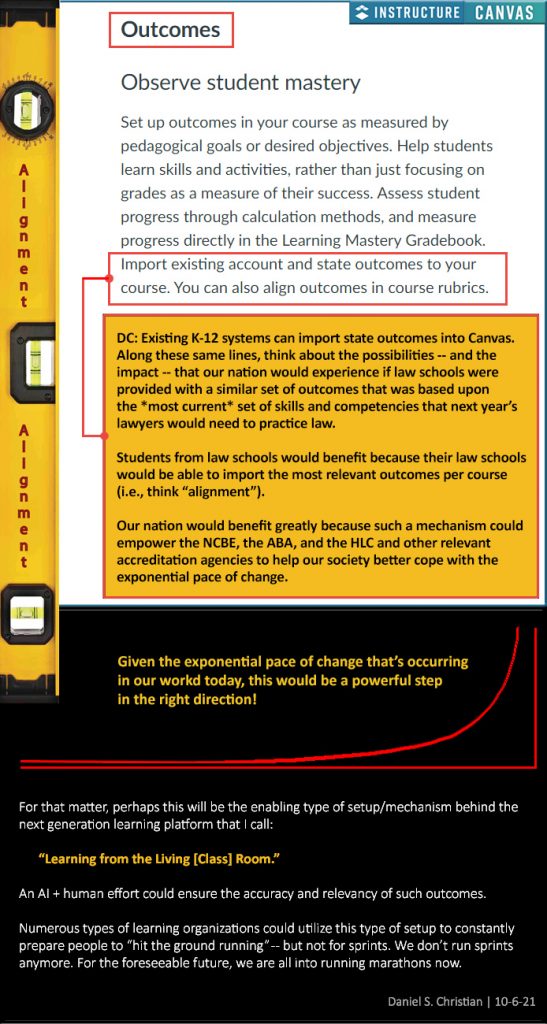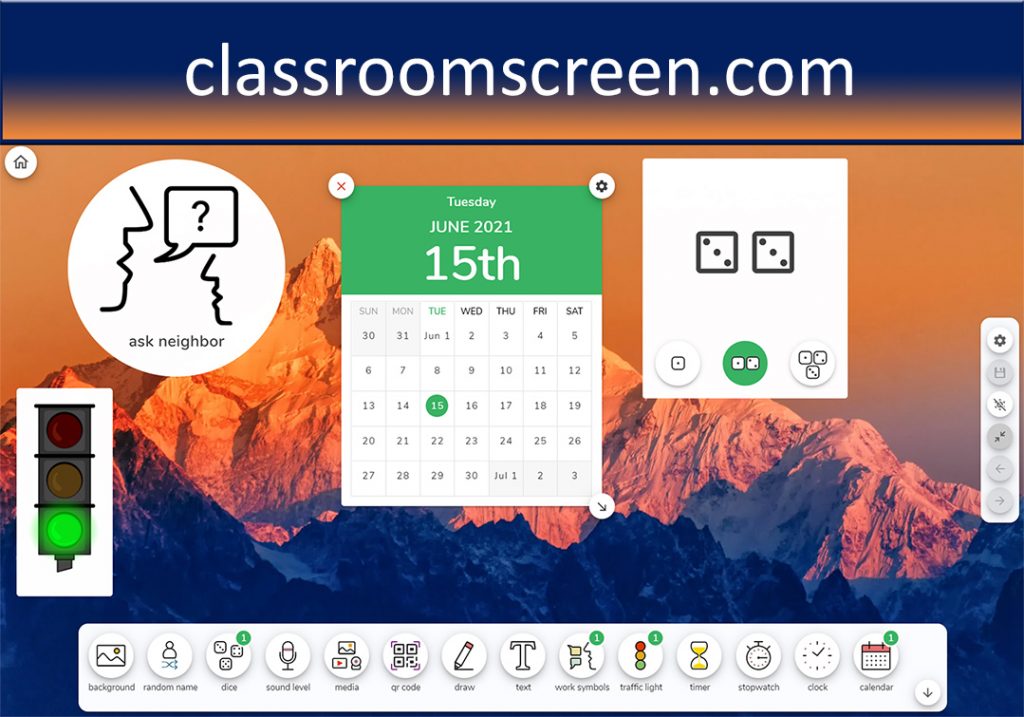How to Get Students to Watch Your Videoshttps://t.co/m2EeDAkHqq pic.twitter.com/L8mMQIsXqg
— Daniel Christian (he/him/his) (@dchristian5) November 1, 2021




How to Get Students to Watch Your Videoshttps://t.co/m2EeDAkHqq pic.twitter.com/L8mMQIsXqg
— Daniel Christian (he/him/his) (@dchristian5) November 1, 2021
@CanvasLMS users, checkout this great article on creating e-learning content. #CanvasLM #CanvasFAM https://t.co/TgYrHbX35z
— Jim Wolf M.S.Ed., M.S.Ed.I.T. (@wjameswolf) October 5, 2021
Here’s an example of what an engaging and exciting online course might [look like].
You start with a short video that introduces the subject. It focuses on the course’s main ideas, and how they relate to one another, getting your learners interested in the topic and making them eager to learn more.
Higher Education Needs to Move Toward Mass-Personalization — from fierceeducation.com by Susan Fourtané
Excerpt:
Every industry, from health sciences to marketing to manufacturing, is using Artificial Intelligence (AI) to facilitate the delivery of mass-personalization, yet education has been slow in its adoption. These smart systems create personalized solutions targeted to meet the unique needs of every individual.
Artificial Intelligence-based technologies have the potential of serving as tools for educators to provide personalized learning. However, for mass-personalization to work, institutions first need to align their leadership. In his feature session What Is It Going to Take to Move from Mass-Production to Mass-Personalization?, during the recent Online Learning Consortium virtual event, Dale Johnson, Director of Digital Innovation at Arizona State University, addressed the issue of mass personalization in higher education.
Johnson reinforced the idea that with mass-personalization professors can deliver the right lesson to the right student at the right time.
…
Mass-personalization software does not replace the professor. It makes the professor better, more focused on the students.



From DSC:
What if we could quickly submit items for a group to discuss, annotate, and respond to — using whichever media format is available/preferable for a person — like a massive 3D-based Voicethread? What if this type of discussion could be contributed to and accessed via Augmented Reality (AR) and/or via Virtual Reality (VR) types of devices?
It could be a new 3D format that a person could essentially blow all the way up into the size of a billboard. Think, “Honey, I shrunk the kids” type of stuff.
Input devices might include:
For example, a person could take a picture of a document or something else and then save that image into a new file format that would be vector-based. I say a vector-based file format so that the image could be enlarged to the size of a billboard without losing any resolution (i.e., wouldn’t become grainy; the image would remain crystal clear regardless of how big the image is). I’m thinking here along the lines of “Honey, I shrunk the kids!”
Other thoughts here:
A question for phase II:
Could this concept also be used if virtual courts take off?
Hmmmm…just thinking out loud.
In a truly connected campus, time, space and location should be absolutely irrelevant. “We should be able to build a digital twin of space and services and we need to think about things that are physical and digital – ‘phygital’,” he pointed out. https://t.co/cyud0rigZl
— Daniel Christian (he/him/his) (@dchristian5) September 8, 2021
Top 300 Tools for Learning 2021 — from toptools4learning.com by Jane Hart
Excerpt:
2021 was the YEAR OF DISRUPTION! There were a substantial number of new tools nominated this year so the main list has now been extended to 300 tools to accommodate them, and each of the 3 sub-lists has been increased to 150 tools. Although the top of this year’s list is relatively stable, there is quite bit of movement of tools on the rest of the list, and the effect of the new tools has been to push other established tools down – if not off the list altogether. Further analysis of the list appears in the right-hand column of the table below.
This table shows the overall rankings as well as the rankings on the 3 sub-lists: Top 150 Tools for Personal Learning (PL150), the Top 150 Tools for Workplace Learning (WL150) and the Top 150 Tools for Education (ED150). NEW tools are shaded YELLOW, tools coming BACK on the list are shaded GREEN. The most popular context in which each tool is used is also highlighted in BLUE. Click on a tool name to find out more about it.
For recalculating those due dates out there: timeanddate.com — with thanks to Lisa Smith at the WMU-Cooley Law School for this resource; Lisa showed how this was used with Cidi Labs Multi-Tool to batch change dates and times within Canvas
From DSC:
Along the lines of time and tools for the classroom…I also find classroomscreen.com helpful in providing some solid timers.

Moodle completes acquisitions, launching services platform — from highereddive.com by Rick Seltzer
Excerpts:
State of Higher Ed LMS Market for US and Canada: Mid-Year 2021 Edition — from philonedtech.com by Phil Hill
Thinking Full-Speed Ahead at Instructure’s Future of Education Collaborative — from campustechnology.com by Mary Grush
A Q&A with FIU Online’s Maikel Alendy
Excerpt:
Maikel Alendy: Our director of learning design and innovation at FIU Online, Gaby Alvarez, likes to use a word that I think was foundational to our strategy to navigate learning through the pandemic — that word is ecosystem.
Our approach, like many, was to leverage Canvas and Zoom, but we had a few processes in place that gave us really a big head start. First, we had piloted Zoom years before and had already rolled out Zoom Pro accounts for all FIU faculty and students. Of course, the initial adoption was nominal. Usage was fine for “BC” (Before COVID) instruction. Still, it was helpful, once in the pandemic, that we already had support materials and some awareness of the tools.
IU researchers introduce ambitious new model for large-scale research on student learning — from news.iu.edu
Excerpt:
“The main conclusion of the study — to the great surprise of many teachers — is that there is no overall effect of feedback timing that spans all learning environments,” said Fyfe, an assistant professor in the Department of Psychological and Brain Sciences. “The findings should provide some comfort to teachers. If they take a few days to return feedback, there is no evidence that the delay will hamper their students’ progress, and in some cases, the delay might even be helpful.”
From DSC:
I must admit that I publish this with some hesitation, as I’m a big fan of personalized, customized feedback. I just hope that study doesn’t stop or reduce faculty members from providing such valuable feedback.
Also see:
The Science of Studying Student Learning at Scale — podcast and transcript — from campustechnology.com by Rhea Kelly; with Emily Fyfe and Ben Motz at Indiana University
Excerpt:
MOTZ: So ManyClasses is really an attempt to try and expand the scope of research so that what we’re doing in asking a question of how people learn, is expanding beyond the boundaries of any single classroom, really aiming at developing inferences that could generalize beyond that narrow scope, but also that might be able to identify where a practice might have benefits.
…
FYFE: …I think when we are thinking of ManyClasses as a research team, we’re thinking of it as a new gold standard for how to conduct scientific research in classrooms
…
And so ManyClasses is a model for sort of combining the rigor of these randomized experiments within these authentic settings. And the goal is to sort of, as Ben said, to do this across many classes, so that we’re not just running one experiment, but we’re replicating it across all of these different authentic educational settings. And so really, at the heart of it, ManyClasses is a new model for conducting research in educational settings.
Instructure Is Back on the Stock Market, But Not Much Change Expected For Canvas Users — from edsurge.com by Jeffrey R. Young
Excerpt:
Instructure is officially a publicly-traded company—again.
Officials from the company, which makes the Canvas learning-management system used at many colleges and schools, rang the opening bell at the New York Stock Exchange today, marking its IPO.
OPM + MOOC = OPX. 244 University Partnerships in the first half of 2021 — from HolonIQ
OPX has well and truly arrived. 2U’s acquisition of EdX. Coursera’s IPO. SEEK’s 50% stake in FutureLearn and their ownership of OES. UpGrad’s rumored $4B valuation. Shorelight Live. Minerva’s OPM pivot. The list goes on, and meanwhile 244 University Partnerships were forged in the first half 2021.
2U, Inc. and edX to Join Together in Industry-Redefining Combination — from transformingdigitaleducation.com
Other items related to this: